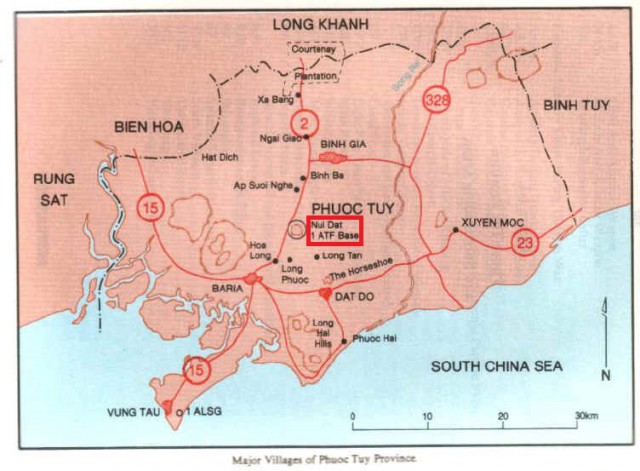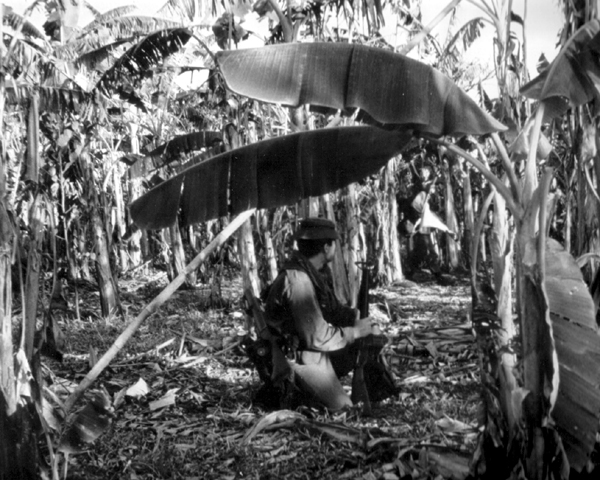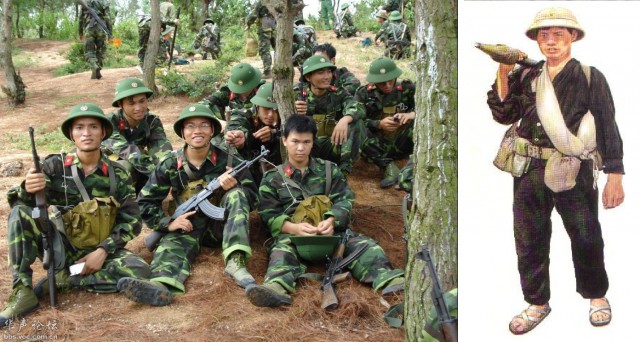During the Vietnam War, 108 Australian soldiers stood against some 1,500 to 2,500 Vietnamese forces near the village of Long Tan. When the battle was over, the Australians lost 18 men, while another 24 were wounded. The Vietnamese, however, may have suffered well over 500 casualties.
Although the Australians won against overwhelming odds, however, their government was quite stingy about handing out awards.
In 1965, Australia already had a presence in Vietnam, but under US control. The 1st Royal Australian Regiment (RAR) had served as the 3rd Battalion of the American 173rd Airborne Brigade, which created tensions. Wanting greater control, Australia sent over a Task Force on 14 June 1966. These joined up with the 1st RAR after having seen action in Malaya.

A major point of contention was that the Australians were not used to the attrition warfare that Americans preferred. Believing that the guerrilla tactics they had mastered in the jungles of Malaya would be more efficient, they set up base in the province of Phuc Tuy because it was a well-known Viet Cong stronghold.
Phuc Tuy also had a port that would allow them to ship troops in and out. And after a reconnaissance of the area, it was decided that the terrain would be ideal for the veterans of the Malayan Campaign.
The site they chose was at Nui Dat, a hill that commanded the center of the province. Its location ensured that if the VC wanted to get to the rest of the populace, they would first have to pass through the Australian position.

In charge of the Task Force was Brigadier David Jackson. To secure their position and to ensure they knew friend from foe, Jackson imposed a 4,000-meter exclusion zone around the base called Line Alpha.
This meant expelling all the locals within the zone so that if they did encounter any Vietnamese, they’d know they were dealing with the VC. And to make sure the residents stayed out, all villages within the exclusion zone were destroyed.
By August 1966, the base was barely three months old and still not entirely readied. Knowing this and hoping to dislodge this very inconveniently located enemy base the VC attacked.

The Australians had picked up VC radio transmissions, but sweeps of the surrounding area found nothing. Just before midnight on August 16, Nui Dat was attacked by mortar fire and recoilless rifles. The Australians responded with counter-battery fire. The firing continued till the next morning then stopped.
The location where the VC had fired from was discovered by a sweep of three companies. Though abandoned, they did find clothes and bloodstains, proving that their return fire had hit some targets.
The Australians, now feeling secure in their new base, flew in a rock band into Nui Dat on August 18. At 11:15 AM that same day, D Company left the base toward the rubber plantation at Long Tan some 2,500 meters away, reaching it at around 1 PM to relieve B Company. After having lunch together, B Company returned to base, while a small detachment of D Company left the campground to patrol the area.

It should be understood that the VC are different from the North Vietnamese Army. The former were a guerrilla force based in South Vietnam who were sympathetic to the communist cause, many of whom wore the traditional black clothing of farmers. The NVA, however, were North Vietnamese professional soldiers who wore green uniforms.

At around 3:40 PM, the detachment came across a group of six to eight Vietnamese men wearing green uniforms. They didn’t see the Australians till Platoon Sergeant Bob Buick fired, hitting one. The rest wisely scattered.
Though the encounter was reported to base, the Australians didn’t immediately realize what they were up against. They were no longer just facing the VC 275th Regiment and the VC D445 Provincial Mobile Battalion, they were now up against at least one NVA battalion (as of 2015, the Vietnamese government remains secretive about the details).

Shortly after resuming the advance, at 16:08 the platoon came under small-arms and rocket-propelled grenade fire from a flank after drawing ahead of the other platoons and was isolated. Pinned down, they called for artillery support as a monsoon rain began, reducing visibility. Beginning as an encounter battle, heavy fighting ensued as the advancing battalions of the Viet Cong 275th Regiment attempted to encircle and destroy the Australians. After less than 20 minutes more than a third of 11 Platoon had become casualties, while the platoon commander was killed soon after.
Their base responded by heavily shelling the VC positions, but Air support was out of the question. Nor did those at Nui Dat want to call on the Americans. They still didn’t understand that the VC and the NVA were starting to flank D Company from different sides as they made their way toward the base.
10 Platoon moved up on the left in support but was repulsed. With D Company facing a much larger force, 12 Platoon tried to push up on the right at 17:15. Fighting off an attack on their right before pushing forward another 110 yd they sustained increasing casualties after clashing with several groups moving around their western flank to form a cut-off prior to a frontal assault.
Opening a path to 11 Platoon yet unable to advance further, they threw smoke to mark their location. Nearly out of ammunition, at 18:00 two UH-1B Iroquois from No. 9 Squadron RAAF arrived overhead to resupply D Company. Meanwhile, the survivors from 11 Platoon withdrew to 12 Platoon during a lull, suffering further losses. Still heavily engaged, both platoons then moved back to the company position covered by artillery.
Continued on Page 2
The post The Battle of Long Tan: 1500 Strong VC and NVA Force Ambushed 108 Aussies, They Lost appeared first on WAR HISTORY ONLINE.